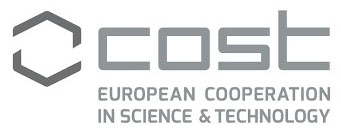COST Action CA17123 “Magnetofon”
General Action Meeting and Workshop (on line)
November 23 to 27 2020
| Monday 23.11.2020: All-optical switching/manipulation of magnetization | |||
|---|---|---|---|
| Chairs: Prof. Andrei Kiriliouk and Dr. Thomas Ostler | |||
| 9:00 | – | 9:10 | Introductions – Prof Andrei Kirilyuk, Radbound University, Nijmegen |
| 9:10 | – | 9:50 | Prof Stéphane Mangin, Mines Nancy: “All-Optical Magnetization Switching Using Multiple to Single Sub-Picosecond Laser Pulses“ |
| 9:50 | – | 10:20 | Dr Jean Besbas, Trinity College, Dublin: “Single-Pulse all-optical Toggle Switching of Magnetization in Mn2RuGa“ |
| 10:20 | – | 10:35 |
Mr Youri van Hees, Eindhoven University of Technology: “Spin-current-enhanced all-optical switching in synthetic ferrimagnets“Single pulse all-optical switching (AOS) of magnetization by fs laser pulses has been proposed as a candidate for writing data in future ultrafast memory applications. However, in this regard it is limited by being a symmetrical toggle mechanism, where the final state is always the opposite of the initial state. We show that optically induced spin currents generated in a ferromagnetic reference layer can significantly impact single pulse AOS in an adjacent all-optically switchable Co/Gd free layer. Using this mechanism, we experimentally demonstrate deterministic all-optical magnetization writing, where the final state of the free layer depends purely on the writing procedure and the magnetization direction of the reference layer. This is realized by using either one, or a sequence of two laser pulses, with carefully selected energies. Moreover this demonstrates that the strong threshold nature of AOS makes it a sensitive probe for elusive optically generated spin currents. |
| 10:35 | – | 10:55 | Break |
| 10:55 | – | 11:25 | Dr Alexey Kimel, Radbound University, Nijmegen: “Emergence of Ferromagentism in Antiferromagentic FeRh: the story of the first picoseconds“ |
| 11:25 | – | 11:55 | Dr Jon Gorchon, Institut Jean Lamour, Nancy: “Spin-orbit Torque Switching of a Ferromagnet with a Picosecond Current Pulse“ |
| 11:55 | – | 12:15 | Break |
| 12:15 | – | 12:30 |
Dr Carl Davies, Radbound University, Nijmegen: “Ultrafast phononic switching of magnetization“
Identifying an efficient pathway to change the order parameter via a subtle excitation of the coupled high-frequency mode is the ultimate goal of the field of ultrafast phase transitions. This is an especially interesting research direction in magnetism, where the coupling between spin and lattice excitations is required for magnetization reversal. Despite several attempts however, the switching between magnetic states via resonant pumping of phonon modes has not yet been demonstrated. Here we show how an ultrafast resonant excitation of the longitudinal optical phonon modes in magnetic garnet films switches magnetization into a peculiar quadrupolar magnetic domain pattern, unambiguously revealing the magneto-elastic mechanism of the switching. In contrast, the excitation of strongly absorbing transverse phonon modes results in thermal demagnetization effect only. |
| 12:30 | – | 12:45 | Dr Sergiu Ruta, Sheffield Hallam University: “All-Optical Switching in Amorphous (Gd,Tb)Co Thin Films: Role of element specific damping“ |
| 12:45 | – | 13:00 |
Tobias Dannegger, University of Konstantz, Germany: “Ultrafast switching of antiferromagnets with the inverse Faraday effect“
|
